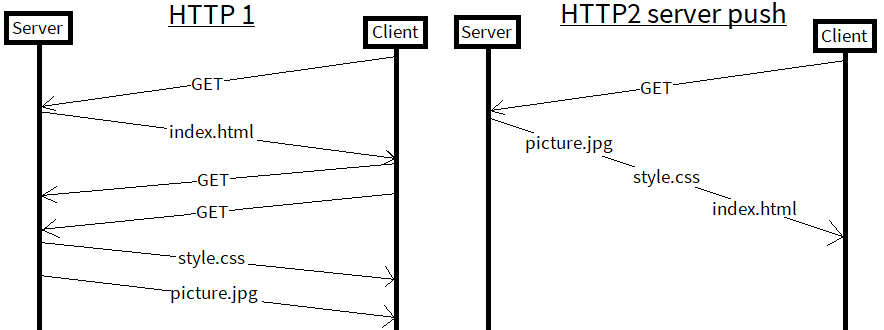Charlie Cochrane
software and game developer
Self hosting with HTTPS and server push
02/04/18
After a few years of using GitHub pages to host my website, I decided to host it myself. Not that GitHub pages isn’t a great free service, self hosting gives me some interesting options for improving my site including server push, HTTPS and in-memory file serving. I wrote my own server that incorporates these features, source available here.
HTTPS for free with Let’s Encrypt:
The majority of GitHub pages sites still use plain old HTTP, making it easy to snoop in on the traffic between those sites. Adding HTTPS (S for Secure) to your website keeps things between you and your readers private. Modern Browsers will shortly be makeing it more and more visible to users when a site is using “insecure” HTTP, not a good look:

Github Pages offers simple to use HTTPS for github.io domains but not for custom domains. Until recently you had to shell out $ for certificates to enable HTTPS, but now the fantastic Let’s Encrypt enables you to get them for free. You can even automate the process, in my case I used the Golang autocert package which provides a autocert manager you can load into your server.

Green padlock is best padlock.
Server push:
A new feature implemented with HTTP2 is server push. This is where you preemptively send files that you think the current user will request, before they request them.

For example: a web page consists of a html file with an image and css file. Usually a user would download the html, parse it to find the src links and then subsequently request the image and css, wasting time. Server push sends all three during the initial html file request, saving time:
In memory static files:
For a small site like mine, keeping the entire website in memory doesn’t pose a massive problem but does offer increased speed as opposed to accessing the data from a disk or SSD. By keeping all of the text files and pictures in memory, requests can be served that much faster.
Try it yourself:
I keep the site available via the old github pages github.io domain as a good speed test for my new server. If you are running Chrome or Firefox, hit F12 and you can watch the network performance between the two. Here's an example:
Github Pages HTTP Self hosted HTTPS
Self hosted HTTPS

Thanks for reading. If you're feeling generous please consider making a donation to Let's Encrypt.